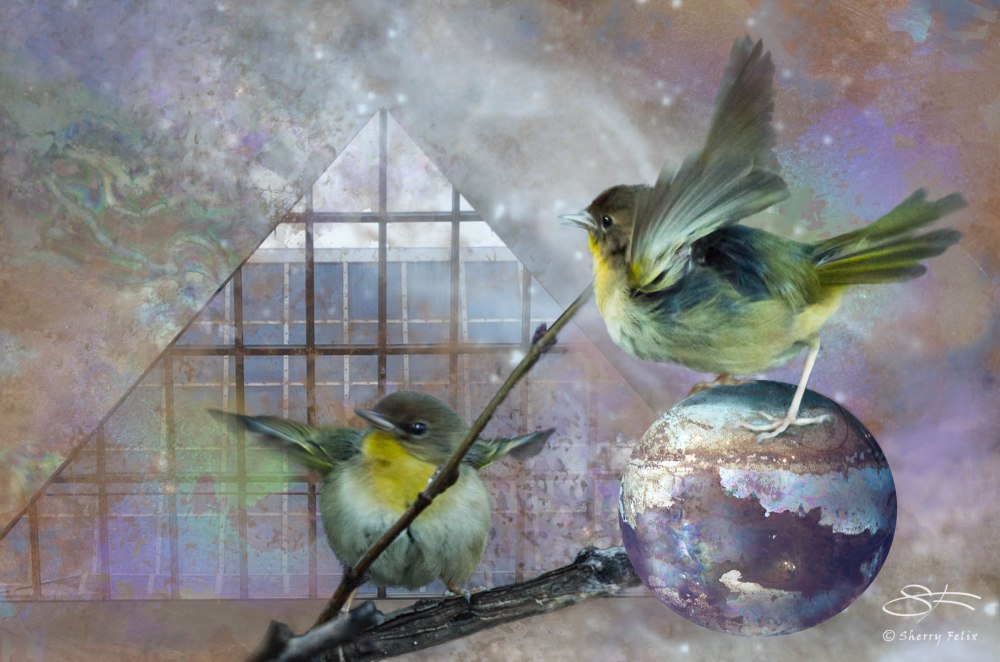This series of photos taken at the Metropolitan Museum of Art, New York City, shows the similarities between old oxidized Roman glass and Tiffany glass. This is no accident. Tiffany studied Roman glass and loved the iridescence in it and recreated the effects in his work.
Roman glass:

Tiffany glass:
Photographs below courtesy of the Met except for the last one by me.
Louis Comfort Tiffany 1848-1933, son of a prominent New York jeweler, studied art in New York and later in Paris. While in France, he met Emile Galle who was producing art glass in Nancy. Tiffany was influenced by the Art Nouveau, Japanese prints, Middle Eastern art, and ancient Roman pottery.
Upon returning to America, Tiffany continued painting and was also involved in decorative arts. In 1875, he founded Louis Comfort Tiffany and patented his first glass-lustering technique in 1881. Favrile glass, the trademark for Tiffany handmade glass, resulted from these experiments in imitating Roman glass. This lustering technique, with its iridescent effect, involved dissolving salts of metallic oxides in the molten glass, creating soft greens, blues, golds, etc. The metallic content was then brought to the surface by subjecting the glass to a reducing flame and spraying with another chloride. This treatment caused the surface to crackle into a profusion of tiny lines that refracted light.
Tiffany retired in 1918. Nash carried on the business. In 1928, L.C. Tiffany severed all connection with the firm, withdrawing permission to use his name.
I used some of the Roman glass to create this:





















Very inspiring and gorgeous examples of glass. Great post. Looking forward to more.
LikeLiked by 1 person
Thanks.
LikeLike
I am a big fan of glass art, this exhibit looks wonderful. Interesting facts about the making of the colors and iridescence, Sherry. I find it astounding that the Romans could produce this sophistication so long ago. Thanks for bringing us the exhibit with your great photos. I like your yellowthroat art too!
LikeLiked by 1 person
I hate to bust the bubble. The shapes of Roman glass are indeed amazing. The iridescence is a result of weathering. There is no special exhibit of any of this glass. The Met has one or two pieces on display here and there.
LikeLike
beautiful and that last image is exquisite!
LikeLike
Thank Cybele. Glad you like my creation.
LikeLiked by 1 person
stunning . . .if only I could afford Tiffany or happen to stumble across some Roman on a walk!!
LikeLiked by 1 person
At least we can see pictures of it 🙂
LikeLiked by 1 person
very true
LikeLike
Awesome! 🙂 Reminds me of all of the Carnival Glass my mother used to collect as a hobby.
LikeLiked by 1 person
I get why you see that. Superficially the iridescence is like Tiffany glass. Molded Carnival glass is less expensive than the blown and baked Tiffany glass which has more colors and textures.
LikeLike
Fascinating – good post
LikeLike
Thanks Derick. I love the colors.
LikeLiked by 1 person
Beautiful glasses. Thanks for sharing these images with us, Sherry.
LikeLike
Glad you enjoyed them.
LikeLiked by 1 person
Thanks Sherry, for bringing the Met Museum to me!
LikeLiked by 1 person
You are welcome. Glad you like my take on it.
LikeLike
….and to me, too!
LikeLiked by 1 person